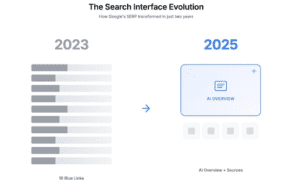In today’s fast-paced enterprise environment, ensuring system availability is paramount for business continuity. Lurduma Reddy Thirumala Reddy, an expert in SAP Basis and HANA, explores the significance of High Availability (HA) and Disaster Recovery (DR) solutions in modern enterprise systems. His insights into sophisticated architectural components demonstrate how businesses can maintain operations with minimal disruptions.
The Need for Advanced System Availability
Enterprise operations rely on high-performance databases that must remain accessible even during unforeseen failures. Research indicates that system downtime can lead to financial losses of up to $478,000 per hour. To mitigate such risks, businesses have adopted advanced HA/DR solutions designed to handle system failures efficiently.
Innovations in System Replication
Modern SAP HANA System Replication mechanisms ensure seamless data availability and consistency. With synchronous replication achieving a Recovery Point Objective (RPO) of under one second, organizations can minimize data loss significantly. Meanwhile, asynchronous replication configurations support geographically distributed environments, reducing RPOs to under 30 seconds. Automated failover detection further enhances reliability by identifying issues within 27 seconds and completing failover procedures in just under three minutes.
Scale-Out Architecture: A Game Changer
SAP HANA’s scale-out architecture introduces multiple layers of redundancy that optimize resource allocation. In this model, primary nodes handle 67.8% of workloads, while secondary nodes manage the remaining 32.2%, ensuring seamless failover. This approach significantly reduces downtime while maintaining efficient load distribution.
Pacemaker Cluster Management for Automated Failover
Pacemaker cluster management has transformed high availability configurations by providing automated failover and resource orchestration. It ensures minimal service disruptions by automating system transitions in failure scenarios. Properly configured Pacemaker clusters maintain a 99.95% uptime rate, processing up to 85,000 transactions per minute with latency as low as 2.1 milliseconds.
Active/Active Replication for Enhanced Performance
One of the most significant innovations in SAP HANA is active/active replication, which enables secondary nodes to handle read-only queries. By offloading up to 60% of read workloads to secondary nodes, this configuration enhances system efficiency without overburdening primary nodes. Furthermore, synchronization rates of 99.99995% ensure consistent data integrity across all instances.
Tenant-Level Replication and Resource Optimization
SAP HANA’s tenant replication frameworks allow businesses to manage up to 512 individual tenant databases, each configured with unique replication parameters. This granularity allows organizations to design recovery strategies tailored to their operational priorities, ensuring critical workloads receive optimal protection. The automated failover mechanism swiftly redirects operations within 8.5 seconds, minimizing downtime and preserving business continuity. By leveraging resource-efficient replication methods, enterprises optimize system performance while maintaining high availability. These frameworks enhance resilience against failures, enabling businesses to dynamically allocate resources, streamline disaster recovery, and sustain uninterrupted operations in complex, multi-tenant database environments.
The Economic Impact of HA/DR Implementation
Investing in robust HA/DR solutions yields substantial financial benefits. Organizations implementing comprehensive HA/DR strategies report an 89.3% reduction in downtime costs, leading to average annual savings of $4.2 million for large enterprises. These savings stem from minimized service disruptions, optimized performance, and enhanced customer confidence.
Best Practices for High Availability Implementation
Achieving optimal system availability requires a strategic approach combining structured testing, proactive monitoring, and redundancy. Businesses leverage advanced monitoring systems that track up to 185 performance metrics in real-time, identifying anomalies within just 2.5 seconds to prevent potential failures. Automated backup and recovery validation further enhance resilience, ensuring lost data can be restored with 99.95% accuracy. Redundancy mechanisms, such as failover clustering and geo-redundant storage, mitigate risks of downtime. Continuous system testing, including chaos engineering and load testing, strengthens infrastructure reliability. By integrating these measures, enterprises ensure seamless operations, minimize disruptions, and safeguard business continuity against unexpected failures.
In conclusion, Lurduma Reddy Thirumala Reddy emphasizes that as enterprise systems evolve, the need for sophisticated high availability (HA) and disaster recovery (DR) solutions becomes increasingly critical. Innovations in system replication, scale-out architecture, and cluster management empower businesses to enhance resilience in mission-critical environments. By leveraging these advancements, organizations can ensure uninterrupted operations, optimize costs, and build a future-proof IT infrastructure capable of adapting to ever-changing demands.



































